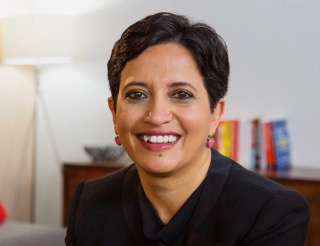Bootstrapping an EdTech Startup with a Paycheck to over $5M: Karyn Koven, CEO of LanguageBird (Part 3)
Sramana Mitra: Who were these people that you got an audience with?
Karyn Koven: I think it was because I had a background, and it was based on my reputation amongst other counselors and school officials.
Sramana Mitra: They were referring students to you?
Karyn Koven: Correct. In the first year I was hoping to get 10 students. You know, let’s just try this out, see if it’s viable. I still had my job and was working full-time during this period that I was experimenting. I was trying things out, seeing how it worked, trying to answer the question: would this really work? Would this be a more viable, more interesting way that students would want to learn? And could parents trust me, the curriculum, and the instructors?
Sramana Mitra: To cater to 10 students your first year, was it one teacher or more?
Karyn Koven: I think at that time we probably had three.
Sramana Mitra: Three teachers. One was from Spain. Where were the other two from?
Karyn Koven: One was from Mexico, and the other one was living in Brazil.
Sramana Mitra: And all Spanish?
Karyn Koven: We started with Spanish, yes.
Sramana Mitra: And what were you charging these families?
Karyn Koven: Back then, I think for a full year course — 24 private lessons — it was around $2,000.
Sramana Mitra: $2,000 for a year. What were you paying the teachers?
Karyn Koven: It depends on where they were and their experience, but the way I thought about it, in terms of a business model, was that whatever families were paying, broken down per hour, the instructors would get around a third. But it just depended on where the instructors were, their experience, and their education.
Sramana Mitra: Roughly a third of what you were being paid by the families?
Karyn Koven: Yes. So, I’d say usually between $20 and $30 an hour, depending on where they are.
Sramana Mitra: What did you learn from that first experiment of 10 students and three instructors? What was working, what was not working? What did you change?
Karyn Koven: Thinking back, what was working was the relationship that was proven to be possible virtually. Students were comfortable speaking with their instructors. If I picked and trained the right instructors, they were able to gain trust from the students and their families. And trust in the classroom ensures that students take risks. If students are taking risks, they’re open to practicing the language. You’re not going to speak a foreign language or delve into something difficult unless you trust your instructor.
Sramana Mitra: And what was not working?
Karyn Koven: I wouldn’t say it wasn’t working, but one of the most difficult parts was convincing families and students that learning online like this was viable and effective. A big challenge was finding students. When you’re a one-person operation doing all the roles — picking up the phone, handling every position — it’s not scalable.
Sramana Mitra: Not scalable.
Karyn Koven: Exactly. Also, in terms of technology, I had a vision from the start of what I thought it should be. You mentioned the challenge of having instructors all over the world. Coordinating the times when people actually meet — they have to meet at the same time for live instruction.
Sramana Mitra: The backend of scheduling and matching time zones is cumbersome. What about the video chat itself? What technology were you using?
Karyn Koven: Skype.
Sramana Mitra: Okay. So, this was 2012?
Karyn Koven: Yes. 2012 to about 2015, same mode.
This segment is part 3 in the series : Bootstrapping an EdTech Startup with a Paycheck to over $5M: Karyn Koven, CEO of LanguageBird
1 2 3 4
Featured Videos
Can 1M/1M Help Me Raise Money?
How Does 1M/1M Democratize Entrepreneurship Education?
How Does 1M/1M Democratize Management Consulting?
When Is The Right Time To Join 1M/1M?
Can 1M/1M Help Me With Business Development?
Can 1M/1M Help Me With Market Sizing?
Can 1M/1M Help Me Validate My Product?
Will I Have Private 1-on-1 Sessions In 1M/1M?
How Does 1M/1M Help Entrepreneurs Connect With Silicon Valley?
Mentoring or Consulting?
Why Does 1M/1M Charge $1000 a Year?
Why Does 1M/1M Partner With Local Organizations?
Why Don\’t Mentoring Networks Work?
Why Is It Important To Study With 1M/1M Now?
Dan Stewart Story
Vikrant Mathur Story
